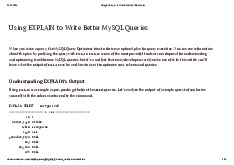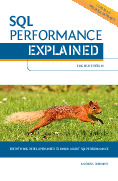



















Preview text:
ميحرلا نمحرلا الله مسب Denormalization By:- 1- Amna Magzoub 2- Selma Yahyia 3- Ala Eltayeb Objectives:- Introduction Definition
Why and when to denormalize data Method of denormalization Manage denormalization data
Advantages and disadvantages of denormalization References Introduction
• Result of normalization is a design that is
structurally consistent with minimal redundancy.
• However, sometimes a normalized database
does not provide maximum processing efficiency.
• May be necessary to accept loss of some
benefits of a fully normalized design in favor of performance. Definition :-
Denormalization is a process of combine two
relation into one new relation.
Denormalization is the process of taking a
normalized database and modifying table
structures to allow controlled redundancy for
increased database performance. Cont..
The argument in favor of denormalization is
basically that it makes retrievals esaier to
express and makes the perform better.
It sometimes claimed to make the database easier to understand.
When and why to denormailize
Some issues need to be considered before denormalization:
1- Is the system’s performance unacceptable with fully
normalized data? Meet a client and do some testing.
2- If the performance is unacceptable, will
denormalizing make it acceptable?
3- If you denormalize to clear those bottlenecks, will the
system and its data still be reliable? Cont… Speed up retrievals.
A strict performance is required. It is not heavily updated.
- So, denormalize only when there is a very clear advantage to doing.
Balancing denormalization issues
Method of denormalization:-
1) Adding Redundant Columns.
2) Adding Derived Columns 3) Combining Tables 4) Repeating Groups
5) Creating extract tables
6) Partitioning Relations
Adding Redundant Columns
• You can add redundant columns to eliminate
frequent joins. For example, if frequent joins
are performed on the titleauthor and authors
tables in order to retrieve the author's last
name, you can add the au_lname column to titleauthor.
• Adding redundant columns eliminates joins for
many queries. The problems with this solution are that it:
• Requires maintenance of new column. All
changes must be made to two tables, and
possibly to many rows in one of the tables.
• Requires more disk space, since au_lname is duplicated. Adding Derived Columns
• Adding derived columns can help eliminate
joins and reduce the time needed to produce aggregate values.
• The example shows both benefits. Frequent
joins are needed between the titleauthor and
titles tables to provide the total advance for a particular book title.
• You can create and maintain a derived data
column in the titles table, eliminating both the
join and the aggregate at run time. This
increases storage needs, and requires
maintenance of the derived column whenever
changes are made to the titles table. Combining Tables
• If most users need to see the full set of joined data
from two tables, collapsing the two tables into one
can improve performance by eliminating the join.
• For example, users frequently need to see the
author name, author ID, and the blurbs copy data
at the same time. The solution is to collapse the
two tables into one. The data from the two tables
must be in a one-to-one relationship to collapse tables. More examples:- Repeating Groups
These repeating groups can be stored as a nested
table within the original table. example




